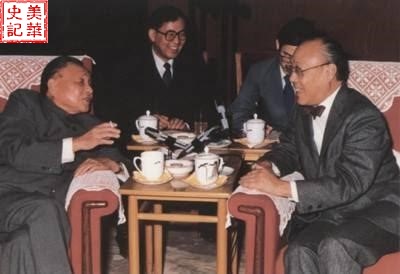Author: Fan Jiao
Editor: Michelle X. Li
Abstract
As the fifth richest American in 1984, with 40 patents and 23 honorary degrees, Dr. An Wang was a computer industry magnate, inventor, and philanthropist who founded Wang Labs, which successfully competed with large companies such as IBM in the 1970s and 1980s. In the mid-1940s, after passing the competitive China Overseas Graduate Examination, he was accepted by Harvard University as a Ph.D. student and became a leading figure in the electronics industry in the world. His breakthrough in manufacturing core memory equipment was one of the greatest technological innovations of the last century. His Fortune 500 company Wang Labs, became a market leader in desktop calculators, word processors, and IBM-compatible mainframe computers. Most of his philanthropy was dedicated to strengthening understanding between Chinese and Western cultures and improving the arts, schools, and health care in Boston and surrounding communities in Massachusetts.
Early Life and Education
An was born in Kunshan, Shanghai, on February 7, 1920. His father studied at Shanghai Jiao-tong University (formerly Nanyang Public School) and his family had been practicing Chinese medicine for generations. He lived in Shanghai with his mother’s family when he was a child, while his father taught English at a private primary school in Kunshan. At the age of six, he moved back to Kunshan to go to school. Because there was no first or second grade in that primary school, he began to study in the third grade. Since he was two years younger than his classmates, he got bullied right away. He was often pushed into the pool by bullies, but he soon learned to swim. In addition, his talents in math helped him gradually build up his confidence. As extracurriculars, his father taught him English, and his grandmother taught him Chinese literature and history with great success. “Thanks to my grandmother, Confucianism is deeply rooted in my heart. As I think the attributes and principles that are important to success in business – such as moderation, patience, balance, and simplicity – are essentials of Confucianism, I also believe that personal satisfaction comes from serving the individual communities.”, he later recalled.
He entered junior high school as the top student in the whole Kunshan district, and came to the famous Shanghai high school at the age of 13. In 1936, at the age of 16, he was admitted to Jiao-Tong university (later Shanghai Jiao-Tong University) to study electrical engineering. After graduation in 1940, he worked as a teaching assistant at the University for a year. In the summer of 1941, Wang An and eight other students joined the Chinese National Government Central Radio Station, where he was responsible for designing and running a military radio station. They went to Hong Kong by boat and then to Guilin. Life was hard: Japanese planes were bombing at least two days a week; working conditions were poor and they lacked many electrical parts. However, the workers persevered and found solutions to their problems. For example, without ready-made generators, they designed a manual generator to power mobile radio transmitters. Everyone had entrepreneurial mindsets and skills. The morale was so high such that they devoted every moment of their life and every fiber in their being toward the fight against Japanese invaders.
In March 1945, the Allies crossed the Rhine into Germany, and the U.S. military landed in Okinawa. The end of World War II was within sight. In order to rebuild China successfully after the war, the Chinese government planned to send some college graduates and engineers to study and work in the United States to gain knowledge and experience. For this purpose, an annual selection examination system was set up by the Department of Education. A scored 2nd place in that year’s examination and won a two-year scholarship. He came to Virginia in June of that year. There were a lot of engineers who went to big American companies like Westinghouse, RCA, and so on. But he preferred doing research, so he applied and became a graduate student in the physics department at Harvard University. In early 1947 he began his Ph.D. in Nonlinear Dynamics and received his Ph.D. a year and a half later.
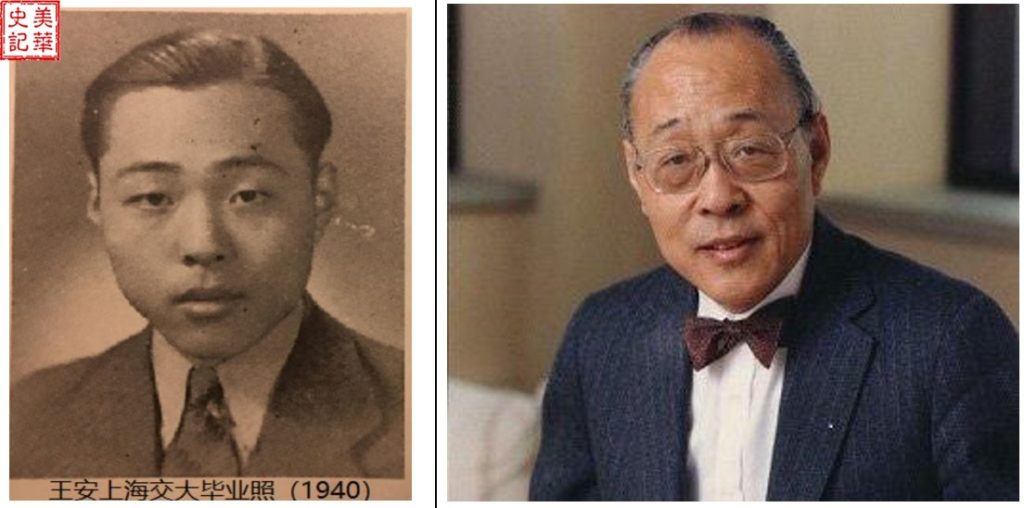
[5,11]
Pioneer in Computing
In the spring of 1948, Wang An came to Harvard Computing Laboratory as a research assistant. One day in May, Dr. Howard H. Aiken, an established physicist, asked him to study how to store information on a computer. After a full three weeks of consideration, he felt that magnetic technology was a feasible approach. This technology was already used for tape and drums with one big drawback that both the tape and the drum have to physically move to read, which slows down the read process. He and Dr. Wu, another graduate student from Shanghai Jiao-tong University, created a way to control core pulse transmission by controlling current switching.
From the appearance, a small magnetic ring whose outer diameter is about 1.5 mm, the inner diameter is not more than 1 mm, that is poured in the dish basin like a plate of dense hemp black sesame seeds. In these small holes of no more than 1 mm, three micro-electricity powered lines are passed, two of which are for the X address, the Y address driver line, and the other is the reading line. Depending on the current driver line, a pulse of 0 or 1 is generated on the reading line. An completed the prototype of the system in a few months. He then told Dr. Wu and Dr. Aiken that he wanted to apply for a patent. With blessings from both, he began to apply for a patent on his own in the fall of 1949.
Dr. Wang had two important patents in this field of technology: patent #2708722, which was filed in October 1949 and approved in May 1955, and patent #3007142, magnetic flux storage system application in June 1957, approved in October 1961. Because of its wide usage and reliability, magnetic core memory was quickly commercialized. From the mid-1950s to the mid-1970s, almost all computers used the cores as their primary memory. For example, the main memory and peripheral devices of the IBM 702 delivered in July 1955 were using cores, and both IBM 704 (1954) and Ferranti Mercury (1957) use core memory as the primary memory. IBM 709, IBM 7040, IBM 7044, and IBM 7099, IBM 7099, also used core memory as the primary memory in the 1960s. It was not until the mid-1970s that core memory was gradually replaced by semiconductor memory.
It is worth mentioning that in 1973, Shanghai Changjiang Radio Factory manufactured CJ719 computers for China’s oil development and seismic data processing using the third generation of integrated circuits developed by Fudan University in Shanghai, and core memory as the main memory.
In the mid-1960s, Dr. Wang invented the computer equipment patent #3402285 (application filed in September 1964, approved in September 68), which laid the foundation for the development of calculators and computers developed by Wang’s Company in later years.
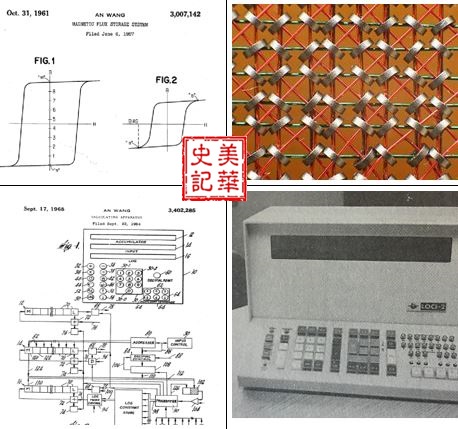
[10, 19]
Founding Wang Labs & Boom Times
Wang An left the Harvard Computer Research Institute in early 1951. At that time, he already had a good reputation in the computer industry and a well-paid contract job, so he decided to set up his own company. In the middle of the 20th century, Chinese people were still discriminated against in various ways in the States. When Wang arrived in the States, although violence against the Chinese was rare because China and the United States were already World War II allies, the prejudice and discrimination still persisted.
On one occasion, Dr. and Mrs. Wang saw an advertisement of an up-scaled apartment, but when they stopped by the apartment, the manager of the apartment told them it had already been rented out. An believed that was because the manager saw both were Chinese. He was saddened to see that at that time, the community thought that the Chinese could only do low-level work. One of the reasons he wanted to create Wang Labs was to show that Chinese individuals can excel in careers other than working at laundromats and restaurants. On June 30th of that year, Wang Laboratories, the company he had invested $600 in, was founded. The company’s address was 296 Columbus Avenue, Boston, a room about 200 square feet for monthly rent of $70. Initially, he used the income from his personal contract to pay for the manufacture of core storage. From 1952 to 1955, Wang An negotiated a patent license for the core memory with IBM. In March 1956, he sold his license to IBM for $500,000. After then, Dr. Wang focused on developing calculators and mainframe computers. In 1966, the Wang LOCI calculator became the company’s main source of income. In 1967, Wang Labs had more than 400 employees and sales of $6.9 million. On August 23rd 1967, Wang Labs went public [10,20].
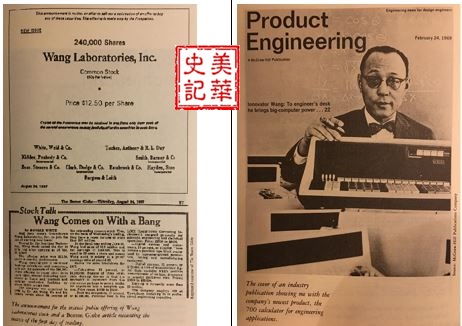
[11, 12]
Since 1971, Wang Labs has competed directly with IBM and DEC, as well as other computer companies. IBM was famous at the time and had an advantage in the market share. Then IBM sold the company’s computer hardware and software, which generally didn’t have a display screen and real-time input keyboard for interactive communication with users. Wang’s computer is compatible with IBM’s computer software, including word processor software, spreadsheet software and bundled with an input keyboard and a monitor. The complete solution was popular around new customers. During this time, Wang also stepped up his marketing efforts. In 1978 Wang launched a three-month television advertising campaign, portraying Wang as David and IBM as Goliath. Wang Labs, then the 32nd-largest computer maker, spent second only to IBM in television advertising.
The first Wang VS mainframe computer was launched in 1977 and continued to be used up to 39 years later. From 1979 to 1984, Wang’s revenues soared by 61% a year. At the same time, the company was further committed to the development of word processing and data processing products, increasing its research and development budget from $3 million in 1976 to $160 million in 1984. During this surge in growth, the company also entered the Fortune 500 market, and by 1983 nearly half of its revenue came from Fortune 500 clients. In 1984, Wang An was named 227th on Fortune Magazine’s list of 500 largest companies in the world. In 1986, it ranked 146th among Fortune 500 companies in the United States. In the same year, Wang Labs won a $480 million contract with the U.S. Air Force (VS Computer Multi Program Program) and established a joint venture with a Chinese partner in Shanghai to produce the small computers of VS family. By the end of August 1990, Wang had won the largest contract in history: a contract with the U.S. State Department that could be worth $841.3 million. In 1992, Wang An had 13,000 employees and annual sales of $1.9 billion.
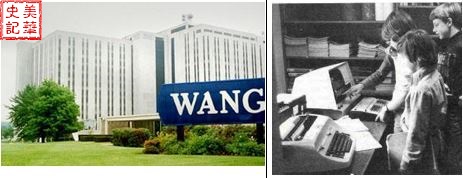
Left: Wang Labs’ headquarters in Lowell, MA, right: In late 1973, eighth graders using Wang computers at Fenn School in Concord, MA
The decline of Wang Labs
From the 1960s to the 1980s, Massachusetts Highway 128 was known as the “American Science and Technology Highway” and “Miracle of Massachusetts”, led by Wang Labs, DEC, and Data General. In 1983, John F. Cunningham was appointed President of Wang Labs, while Dr. Wang remained as Chairman and CEO. Cunningham had been with the company since 1967 and has contributed to the automation product line of Wang Labs’ computer office suite software and hardware.
Since the mid-1980s, with the rapid development of technology, new and smaller personal computers, network applications, and more powerful workstations began to challenge Wang’s small machine market and Wang Labs began to lose its high growth momentum. As a result, the company had to undergo a series of organizational changes. Cunningham resigned in July 1985 due to the news of a sharp drop in income. He later said his resignation was due to Wang’s decision to choose his son Fred Wang as the company’s future leader. Later, Dr. Wang briefly returned as president of the company. His elder son Fred Wang, who was head of finance and research and development at the time, was appointed as President. The company made a modest profit in 1986. The company lost $70 million in the first full year of 1987. In 1988, the company’s losses increased to $92 million. By the end of the fiscal year in June 1989, the company was losing $424m a year, and the company’s cash flow problems were at crisis point. Although most computer companies finance their growth by issuing more stock shares, Wang had chosen to use debt to avoid further diluting the family’s control of the company. Under mounting pressure from creditors to reverse the company’s decline in earnings,
In August 1989, Mr. Wang removed his son as president and named Richard W. Miller, the former head of General Electric’s consumer electronics business, to replace Fred Wang, who inherited more than $1 billion in debt, including $575 million in bank loans. Miller quickly announced cuts in executive bureaucracy, selling non-strategic assets and pushed companies into emerging markets it neglected, trying to overhaul the company’s direction through these programs (some believed Fred Wang’s firing as the scapegoat for the company’s failure). After Wang’s death in March 1990, Miller was appointed to an additional position as Chairman and CEO.
Wang Labs filed for bankruptcy protection on August 18, 1992. The new company, which was out of bankruptcy protection, was divided into Wang Global (Computer) and Wang Software. Kodak acquired Wang Software in 1997. In 1999, The Netherlands acquired Wang Global, which has annual revenues of $3.5 billion. As of 2006, between 1,000 and 2,000 Wang VS systems worldwide were still in use. As for the other “Miracles of Massachusetts” stars, DEC was acquired by Compaq in June 1998. Data General was acquired by EMC in October 1999.
It’s worth noting that John Chambers, a former vice president of U.S. operations at Wang Labs, joined Cisco Systems in 1991. Since January 1995, when he became Chief Executive Officer of Cisco, the company’s annual revenue has grown from $70 million to about $40 billion in 2007. Cisco market cap is 204 billion in 2020.
Giving Back to Communities
In 1984, Forbes magazine estimated Wang’s value at $1.6 billion, ranking him as the fifth richest American. Wang credited his success to his school, communities and culture, and focused on philanthropy after the 1970s, feeling obligated to repay them. He donated $4 million to his alma mater, Harvard University. In 1984, he donated $1 million to Harvard in honor of four scientific scholarships for physics professors of the University, and $1 million to the John K. Fairbank Center for East Asian Studies to train young Chinese scholars. Wang An also donated $2 million to other school programs. In 1979, Wang An founded the $6 million “Wang An Graduate School”, an independent/non-profit research institute in Tyngsboro, MA, for software engineers and Chinese scholars. Wang An used all the income from his autobiography, Lessons, to fund the institute. The “Wang An Institute” is now known as the “Wang An Institute at Boston University”.
At the same time, Wang An paid great attention to community building. He built a $15 million “Wang An factory” in Boston’s Chinatown for 300 local residents, completed in the winter of 1983. He played an important role in revitalizing The Old Industrial City, 30 miles northwest of Boston, where Wang’s head office was located, including donating to the local “Wang An Middle School”. He also made a significant contribution to the restoration of Boston’s landmark Metropolitan Theatre, raising $9.8 million from 1989 to 1992 to restore the theater to “the glory days of the 1920s”, which was renamed as “Wang An Theatre” in 1983, and the Metropolitan Center, known as the “Wang An Center for the Arts”. At the same period, Dr. Wang donated $4 million to an outpatient center at Massachusetts General Hospital, which was renamed “Wang Building”. He also donated $1 million to his wife Loraine’s alma mater, Wellesley College (MA).
“I don’t know how many thousands of people are grateful for what he’s done, ” Governor Michael S. Dukakis once said of Dr. Wang.
Dr. Wang’s honors include:
- Fellow of the American Society of Electrical and Electronics Engineers
- Member of the American Academy of Arts and Sciences
- The National Inventors Hall of Fame
- Professorship of An Wang of computer science and electrical engineering at Harvard University, named after him
Dr. Wang and his wife, Loraine, have three children, eldest son Frederick, second son Courtney and daughter Juliette.
Dr. Wang An passed away on March 25, 1990 in Boston due to illness.
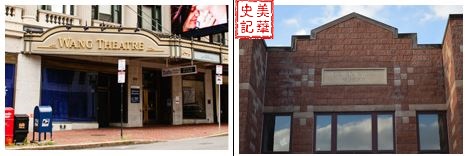
[22, 23]
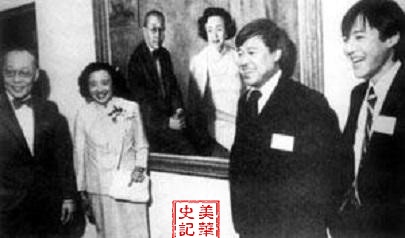
[20]
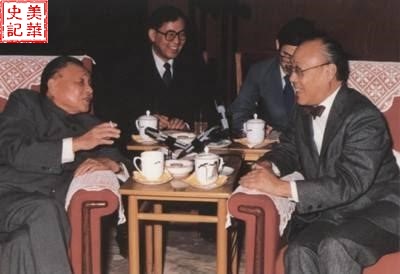
1986 with Deng Xiao-ping [20]
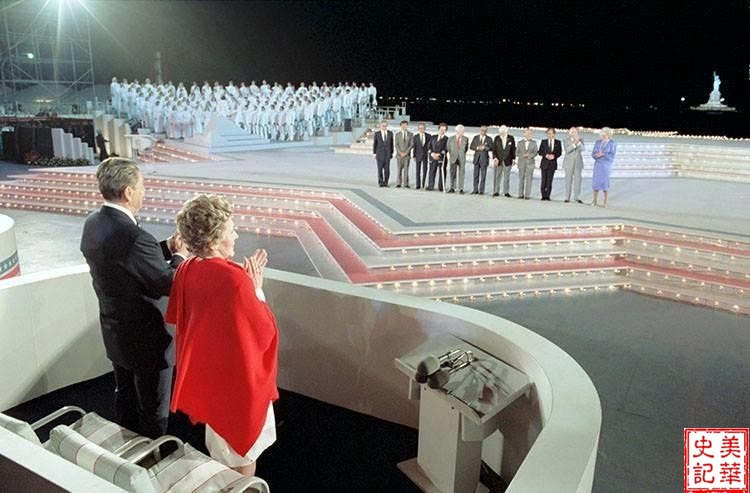
President Reagan and his wife, Nancy, presented the Medal of Freedom at the opening ceremony of The National Day Weekend on New York’s Governors Island on July 3, 1987. Winners were Henry Kissinger, Franklin Chang-Diaz (astronaut), IM Pei, Itzhak Perlman (violinist, conductor), James Reston (New York Times columnist/editor-in-chief), Kenneth Clark (writer/broadcaster/art historian), Albert Sabin (Polio Vaccine Inventor), Wang An, Elie Wiesel (American Jewish Writer, Professor, Political Activist, Nobel Laureate and Holocaust Survivor), Bob Hope (Actor, Singer), Hanna Holburn Gray(President of the University of Chicago), and Lee Iacocca (Businessman, President of Chrysler, President of Ford).
References
1. Wang, An, and Eugene Linden, Lessons, An Autobiography, Reading, Massachusetts, Addison-Wesley Publishing Company, John Wiley & Sons, 1984: P11-26
2. Wang, 1984: P27-28
3. Wang, 1984: P38-43
4. Wang, 1984: P40-42
5. Wang, 1984: Picture #9
6. Wang, 1984: P44-73
7. Wang, 1984: Picture #22
8. Wang, 1984: P75-79
9. Wang, 1984: P91-102
10. Wang, 1984: P141-148
11. Wang, 1984: Picture #24
12. Wang, 1984: Picture #25
13. Wang, 1984: Picture #28
14. Wang, 1984: Picture #29
15. https://www.thefamouspeople.com/profiles/dr-an-wang-692.php
17. http://www.computerhistory.org/revolution/memory-storage/8/253
18. http://www.cs.fudan.edu.cn/?p=10176
19. https://patents.google.com/patent/US3402285
20. https://www.facebook.com/anwangdocumentary/
22. http://www.bochcenter.org/discover/our-theatres/wang-theatre/wang-theatre-landing-page
23. https://www.facebook.com/pg/lpsdwang/photos/?ref=page_internal
24. http://www.fundinguniverse.com/company-histories/wang-laboratories-inc-history/
25. https://www.quora.com/What-happened-with-Wang-Laboratories-and-their-excellent-computers
26. https://www.nytimes.com/1984/05/05/us/chinese-immigrant-emerges-as-boston-s-top-benefactor.html
27. http://journal.c2er.org/2013/05/silicon-valley-and-route-128-the-camelots-of-economic-development/
28. https://www.cnet.com/news/compaq-to-buy-digital-for-9-6-billion/
29. https://www.cnet.com/news/emc-buys-data-general-for-1-1-billion/
30. http://www.transvirt.com/documents/
31. https://patents.google.com/patent/US2708722A/en
